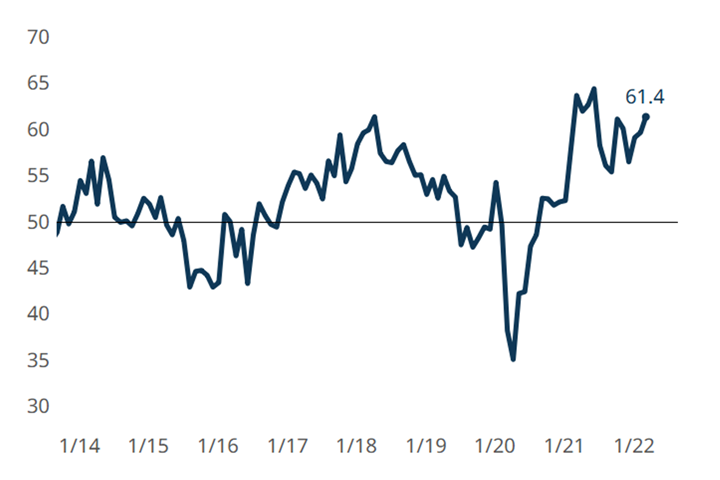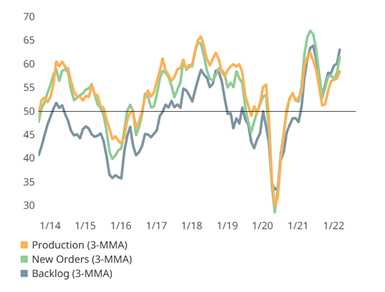Composites industry continues 2022 upswing
The Gardner Business Index closed March out at 61.4, with production activity continuing to persist despite some restraints caused by supplier delivery and employment components.

March Index results. Overall, the Gardner Business Index: Composites Fabricating increased to 61.4 in March, continuously driven by strong demand. Photo Credit, all images: Gardner Business Intelligence
The Gardner Business Index (GBI): Composites Fabricating expanded at an accelerated rate each month in 2022, closing March with a reading of 61.4. According to Gardner Intelligence, it has been several months since composites activity was reported at that level, the last reading being 61.1 in October 2021. The month of March marks a total 4.5 point increase in composites activity since the end of 2021, 40% of which materialized in the month of March alone.

Expanding activity. Three-month moving averages (3-MMA) for production, new orders and backlog of the Gardner Business Index: Composites Fabricating.
Production activity continues to expand, increasing at a faster rate, but to a lesser degree than backlog and new orders. Both new orders and backlog readings (with an average increase of approximately three points) are up more than production (an increase of 1.6 points) in March. Issues with supplier deliveries (Index = 77) and employment activity (52) serve to further constrain production activity. However, employment activity did expand in March (52) following two months of flat readings that were at an 18-month low (50).
Related Content
-
Composites market shows signs of stabilizing as future outlook brightens
Improving supplier deliveries and strong future business index point to opportunities ahead.
-
Composites industry activity stayed steady in January
The GBI: Composites Fabricating contracted in January to about the same degree it did in December, representing a move in the right direction.
-
Composites Fabricating Index loses ground in April amid tariff uncertainty
Latest reading of 47.3 is fueled by a drop in new orders as markets react to quick changes in trade policy.



